Korea’s autumn feels tailor-made for day trips: sky so clear it looks polished, cool air that begs for a stroll, and mountains that trade their summer greens for fiery reds, ambers, and golden ginkgo.
With fast trains, efficient buses, and compact city radiuses, you can leave after breakfast, chase color all day, and be back in time for street-stall hotteok. This guide maps out the best routes, what to expect, and how to plan smooth, photo-worthy escapes from Seoul, Busan, and the southwest.
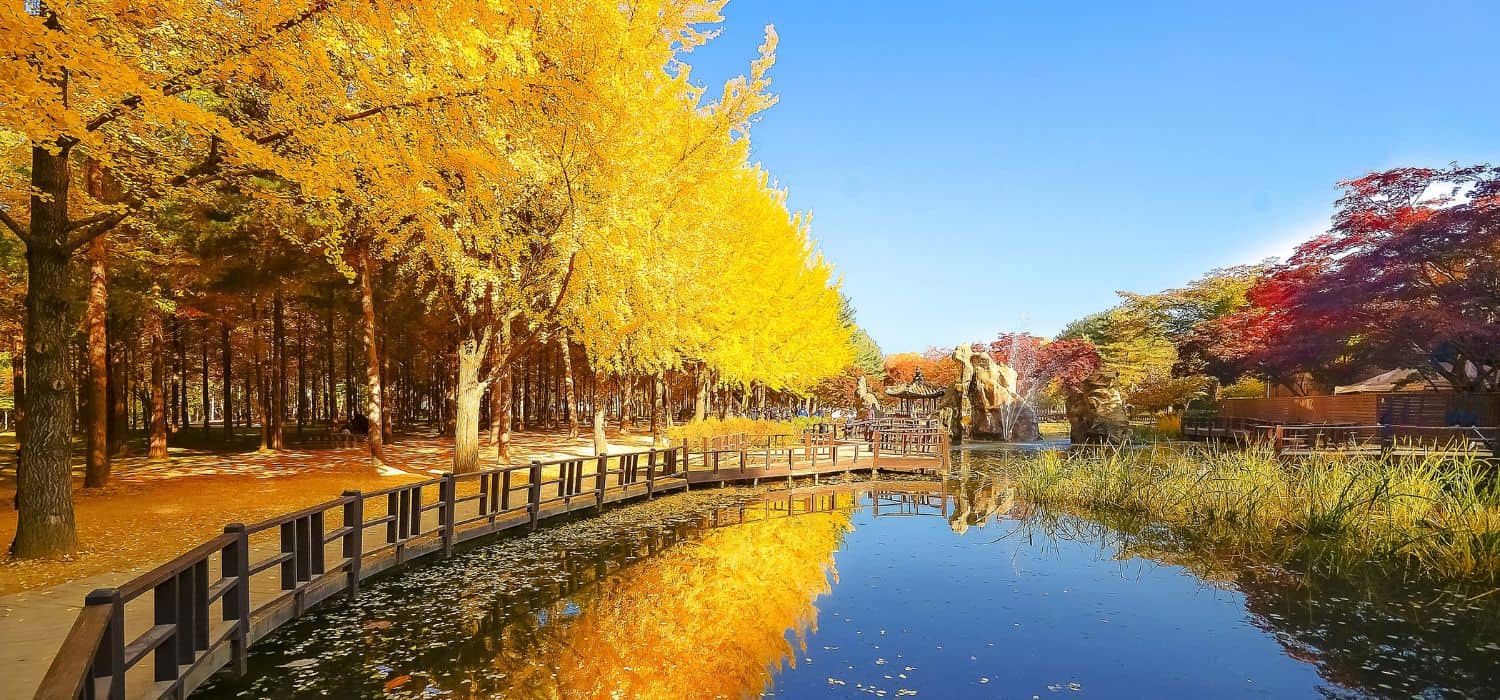
Jump to:
- 🍁 Why Korea in Autumn (and When to Go)
- 🚆 How to Plan a Fall Day Trip (Trains, Buses, Car Rentals, Passes)
- 🗺️ Map Overview: Foliage Hotspots & Easy Day-Trip Radiuses
- 🏙️ Best Day Trips from Seoul
- 🌊 Best Day Trips from Busan
- 🌾 Leaf-Lover’s Detours in the Southwest
- 🎎 Festivals & Foliage Timing by Region (Late Sept–Mid Nov)
- 🍽️ Seasonal Eats to Try on the Road (Hotteok, Dakgalbi, Crab, Tea)
- 🎒 What to Pack for Crisp, Changeable Weather
- 🗓️ Sample One-Day Itineraries
- 💸 Budget & Ticketing Tips (KTX/ITX, City Passes, Entry Fees)
- 🤝 Responsible Travel & Photo Etiquette in Peak Season
- ❓Frequently Asked Questions
- 💬 Comments
🍁 Why Korea in Autumn (and When to Go)
Peak foliage generally rolls from north to south and high to low elevation, landing between late September and mid-November. Mountain parks—Seoraksan, Naejangsan—tend to turn first, followed by lakes, gardens, and urban boulevards.
Expect crisp mornings (8–15 °C) and mild afternoons (15–22 °C), shorter daylight, and busier weekends around the brightest “peak” weeks. Aim for weekday outings, start early, and make flexible plans in case a particular ridge or valley hasn’t fully turned yet.
🚆 How to Plan a Fall Day Trip (Trains, Buses, Car Rentals, Passes)
For speed and comfort from Seoul, prioritize KTX/ITX trains or direct intercity buses; from Busan, use KTX/SRT to Gyeongju or local buses to Tongyeong and Geoje. Car rentals give maximum freedom for multi-stop loops (e.g., Gapyeong or Boseong→Suncheon), but factor in parking and weekend congestion.
Pre-book any cable car or popular garden tickets if available, screenshot transit timetables in case of patchy signal, and keep a simple rule: one hero stop plus one light add-on beats over-stuffed itineraries.
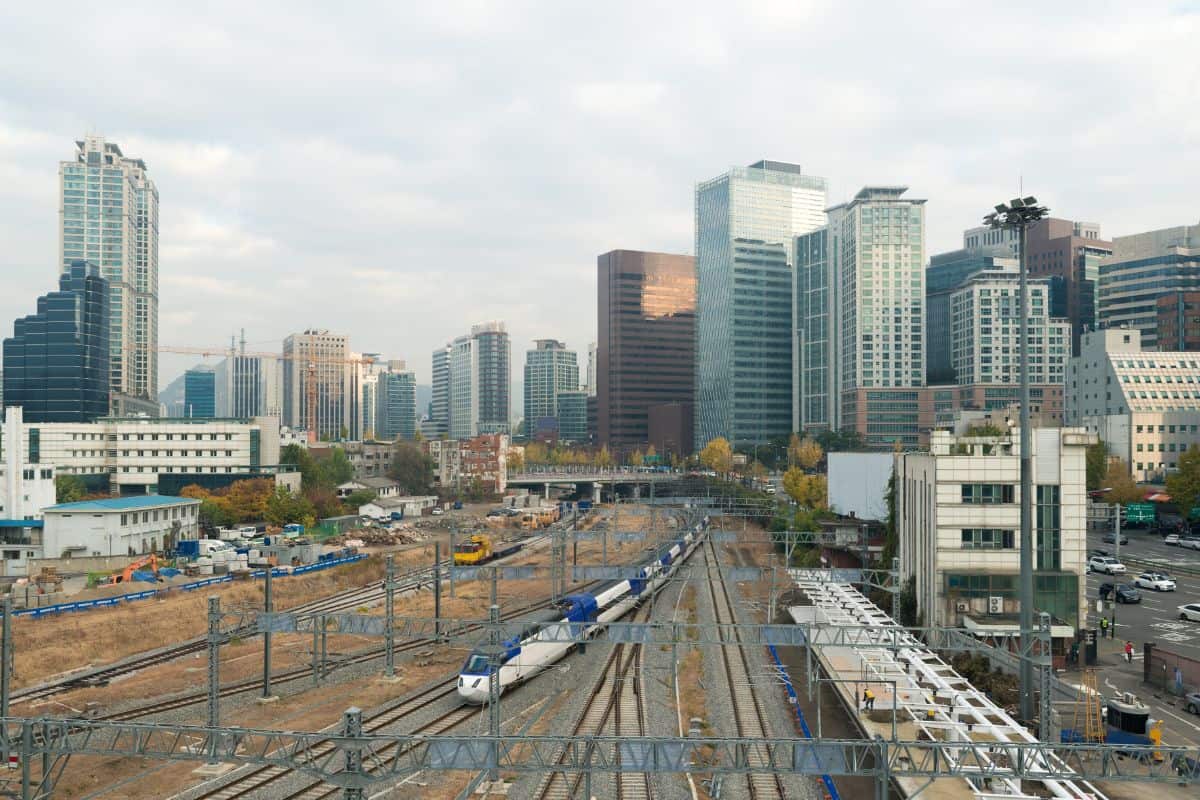
🗺️ Map Overview: Foliage Hotspots & Easy Day-Trip Radiuses
Think in 90–150-minute rings around Seoul and Busan. From Seoul: east for mountains (Seoraksan), southeast for fortress towns (Suwon), east-southeast for lake-and-garden loops (Nami + Morning Calm), and south for Naejangsan (the most dramatic maple tunnel in the country).
From Busan: Gyeongju for temple-rich valleys, Tongyeong for ocean-meets-mountain panoramas, Geoje for sculpted gardens on island cliffs, and inland for storied temples lined with ginkgo.
🏙️ Best Day Trips from Seoul
Nami Island, Gapyeong Rail Bike & Garden of Morning Calm Loop
A classic “soft adventure” trio with riverside bike rails, storybook tree alleys, and landscaped autumn borders. Aim to hit the rail bike first (morning slots = softer light), Nami Island before midday crowds, and the Garden at golden hour.
Seoraksan National Park (Sokcho)
Towering granite spires dressed in maple and oak; short but steep trails (e.g., Biseondae, Ulsanbawi for the fit), plus cable car views over a patchwork canopy. Reward the day with Sokcho seafood—sashimi or crispy squid.
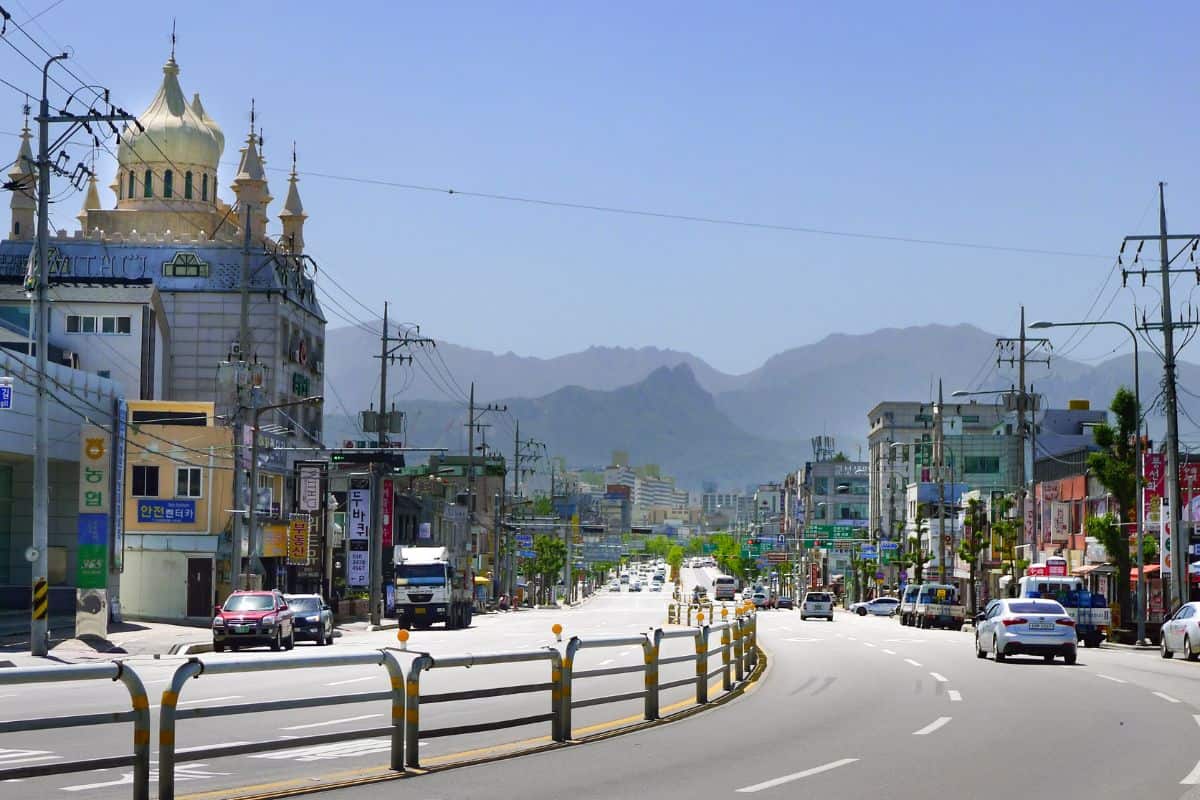
Naejangsan National Park (Jeongeup/Jangseong)
Korea’s maple cathedral. The famed “maple tunnel” and reflections around Naejangsa Temple make it the country’s poster child for fall. Gentle walking paths suit every pace; go early for soft light and quieter trails.
Suwon Hwaseong Fortress
Crenellated walls circling ginkgo-lined paths, village alleys, and archery grounds. Easier on the legs than mountain parks and great for culture-plus-color photos.
Pocheon Art Valley & Herb Island
Abandoned quarry reborn as a marble-walled emerald lake, plus a whimsical garden complex that gleams in late-afternoon light. Light hiking, many photo nooks, and relaxed pacing.
Yangpyeong Dumulmeori & Semiwon Gardens
Where river mists meet willow silhouettes and lotus ponds. Come at sunrise for reflection shots, then wander Semiwon’s landscaped paths; pair with a slow brunch nearby.
Chuncheon (Soyang River Skywalk & Dakgalbi Street)
Glass-bottom views over river blues, then a sizzling pan of the city’s signature spicy stir-fried chicken with chewy rice cakes—ideal on a chilly afternoon.
🌊 Best Day Trips from Busan
Gyeongju “Museum Without Walls” Autumn Circuit
Bulguksa Temple, Seokguram Grotto, and tumuli parks draped in gold. The city’s ginkgo avenues and royal mounds are especially photogenic from late October to early November.
Tongyeong & Mireuksan Cable Car
Cable up to sweeping island-studded views where sea blues frame ember-tipped ridges. Add the Luge or Dongpirang Mural Village if time allows.
Geoje & Oedo Botania
Boat out to a Mediterranean-styled botanical island carved into terraces and topiary, backdropped by teal water and russet hills. Pair with Windy Hill or Hakdong Mongdol Beach.
Tongdosa Temple & Unmunsa Ginkgo Road
Two historic temples wrapped in forest calm. Unmunsa’s ginkgo lanes blush gold under a high blue sky—bring a wide-angle for the canopy effect.
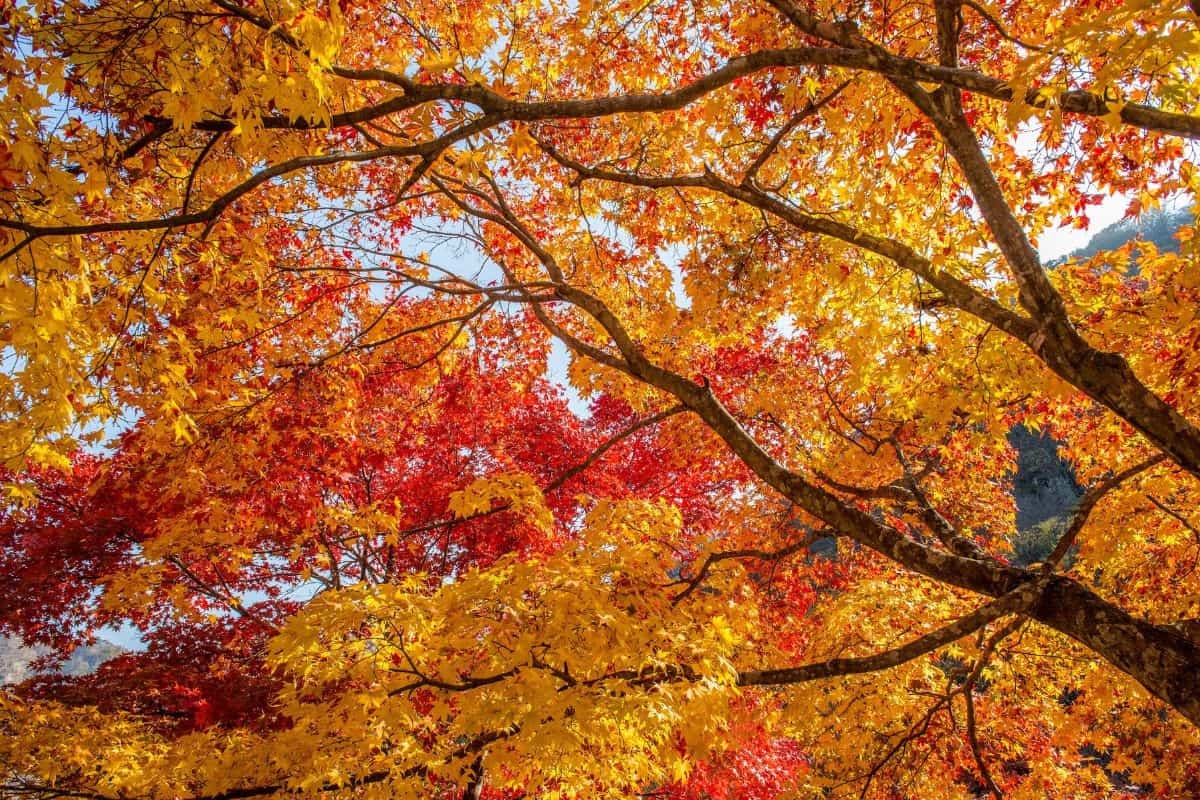
🌾 Leaf-Lover’s Detours in the Southwest
Boseong Green Tea Fields
Contoured tea terraces turn a deep, velvety green that pops against surrounding golds. Hike up for ridge-line vistas, then sip roasted green tea or grab matcha ice cream.
Suncheon Bay Wetland Reserve & National Garden
Reed seas glowing honey-brown at sunset, with long boardwalks and birdlife. The National Garden adds mirrored ponds and curated borders that peak beautifully in autumn.
🎎 Festivals & Foliage Timing by Region (Late Sept–Mid Nov)
High-elevation north and east (Seoraksan, Odaesan) typically begin in late September to mid-October, while southwest and lowland gardens (Boseong, Suncheon, urban ginkgo boulevards) bloom from late October into mid-November.
Expect weekend festivals around temple towns and national parks—markets, cultural shows, and seasonal snacks. If crowds spike, pivot to a nearby secondary viewpoint (e.g., less-traveled temple trails or lakeside promenades).
🍽️ Seasonal Eats to Try on the Road (Hotteok, Dakgalbi, Crab, Tea)
Warm hands around syrup-filled hotteok; share a pan of Chuncheon dakgalbi; try Sokcho or Busan fall seafood (grilled mackerel, sashimi); sip roasted green tea in Boseong; and hunt down street tteok skewers or fish cake soup near bus terminals after sunset.
🎒 What to Pack for Crisp, Changeable Weather
Layers rule: breathable base, light knit or fleece, windproof shell, and a packable down if heading into the hills. Add cushioned walking shoes with grip, thin gloves for dawn starts, a cap, sunglasses, SPF (the sun still bites), lip balm, a refillable bottle, power bank, and a lightweight scarf for cable cars and windy ridges.
🗓️ Sample One-Day Itineraries
Seoul → Naejangsan Peak Color Day
- 07:00–09:30: Early train/bus south; quick coffee and snack.
- 09:30–12:00: Enter park, walk the maple tunnel, continue to Naejangsa Temple; slow photos along streams.
- 12:00–13:00: Lunch near park gate (simple soups, pancakes).
- 13:00–15:30: Optional gentle ridge path or second loop to catch different angles under stronger light.
- 15:30–18:30: Head back toward Seoul; pick up station snacks for the ride.
Seoul → Seoraksan Hike & Seafood
- 06:30–09:00: Bus to Sokcho, local transfer to park.
- 09:00–11:00: Cable car + short trails (Biryong Falls or Biseondae) for mixed fitness levels.
- 11:30–12:30: Lunch boxes or noodle soup at base.
- 12:30–14:30: Ulsanbawi for strong hikers (allow extra time) or valley strolls for relaxed walkers.
- 15:00–17:00: Sokcho harbor snack run; return to Seoul.
Busan → Gyeongju Temples & Royal Tombs
- 08:00–08:30: KTX/SRT to Singyeongju; quick bus/taxi.
- 09:00–11:00: Bulguksa Temple (wooden eaves framed by amber foliage).
- 11:00–12:00: Transfer + lunch near Tumuli Park.
- 12:00–14:00: Daereungwon/Tumuli, Woljeonggyo Bridge; ginkgo lanes for golden-hour portraits.
- 14:30–16:00: Café stop in Hwangnidan-gil; train back to Busan.
💸 Budget & Ticketing Tips (KTX/ITX, City Passes, Entry Fees)
Round-trip KTX/SRT between major cities typically forms the biggest cost; intercity bus + local taxi combos often save money with only modest time trade-offs.
Many parks have small entry fees; cable cars, gardens, and special exhibits add à-la-carte costs, so prioritize one paid “hero” experience per day. If mixing multiple Seoul-area stops, consider regional day passes or bundled tickets where offered. Carry a T-money card for seamless local transfers.
🤝 Responsible Travel & Photo Etiquette in Peak Season
Stay on marked paths—fragile roots sit just under the leaf litter. Avoid blocking narrow bridges or temple gates for long photo ops; take turns on “hot” spots like maple tunnels and ginkgo alleys. Dress modestly in temple precincts, keep noise down, and pack out any trash. Drones are restricted in many parks—check rules before flying.
❓Frequently Asked Questions
Weekends at peak color get busy, especially 10:30–15:30. Start early, choose one or two key stops, and travel on weekdays where possible.
Fortresses, gardens, and many temple complexes offer flat or gently sloped paths and accessible facilities; some mountain viewpoints require stairs or uneven stone steps.
Colors can look richer under overcast skies. Swap longer hikes for gardens, fortress walls, museums, or café-lined historic streets; bring a compact umbrella and waterproof shell.
Travel light—daypack only. If transferring hotels, use station lockers or ask your accommodation to hold bags before/after check-in.

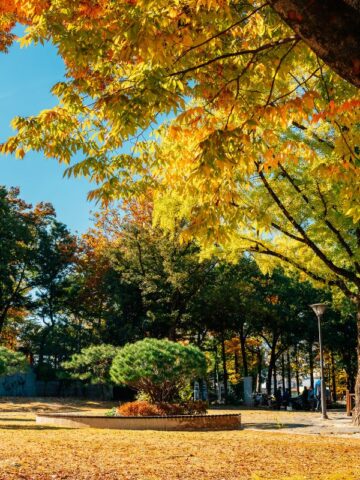
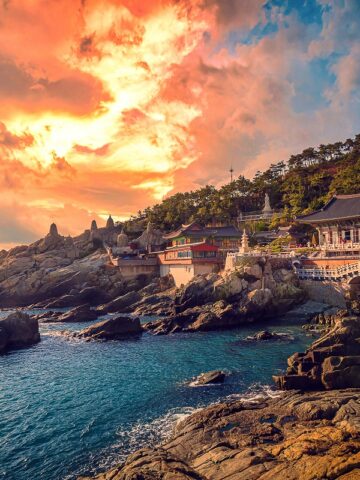
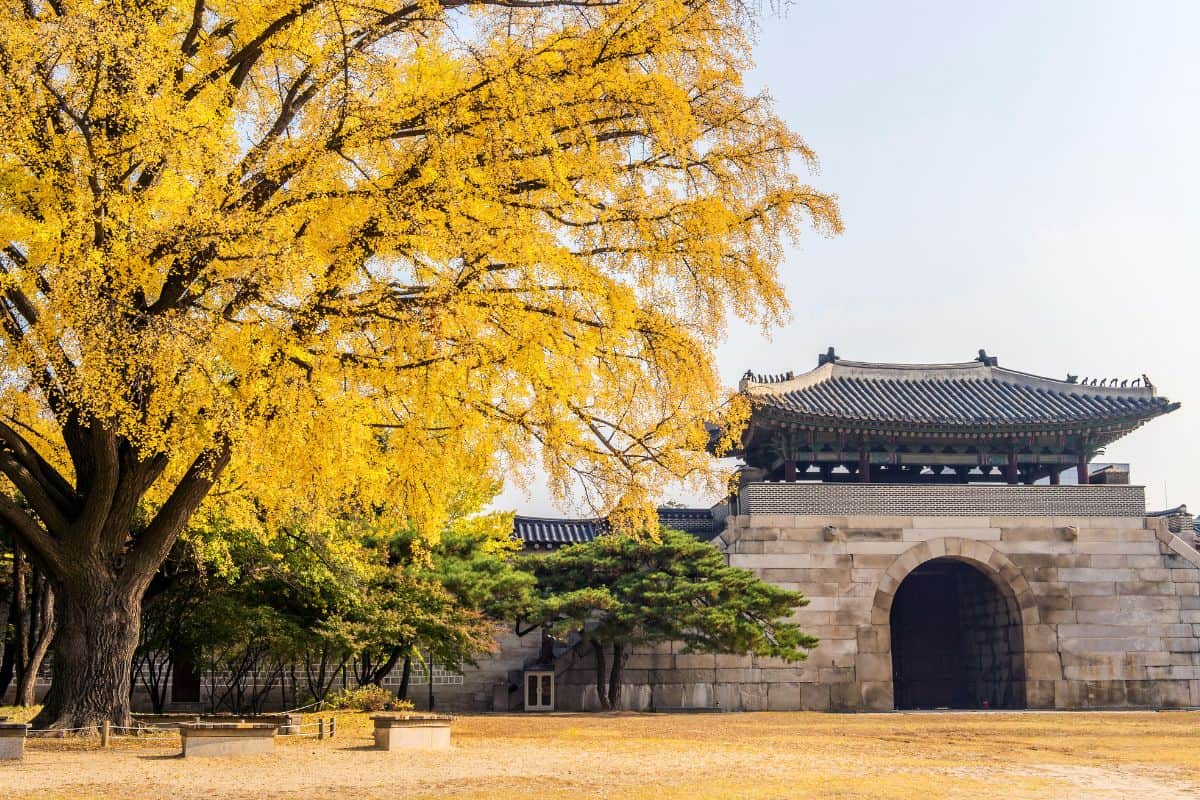
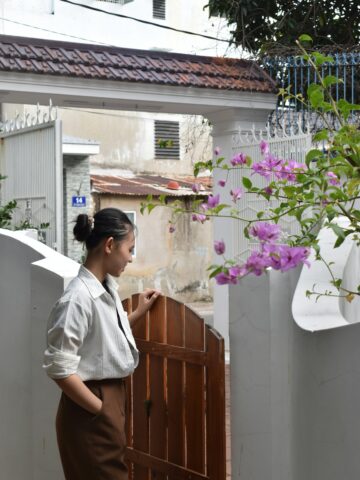
Comments
No Comments